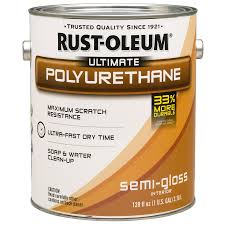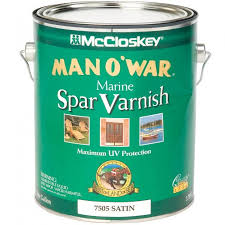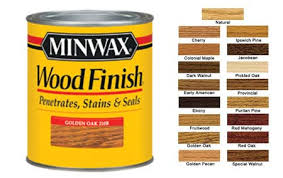FINISHES
There are many finishes, each of which has strengths and weaknesses. They
vary in ease of application, water resistance, solvent resistance, dirt resistance,
surface buildup toxicity, durability, gloss and easy of repair. The most commonly
used finishes are oils, varnish and urethane, oil/varnish mixtures, wax, wiping
varnishes, shellac and lacquers.
OILS
Two types of oil are used to finish furniture: linseed oil which is pressed from flax
seed and Tung oil which comes from the nut of the Tung tree. Though Tung oil originated in China, much of it is now exported from South America. Tung oil is superior to linseed oil, with greater water resistance and less tendency to yellow over time.
In their purest forms, these oils dry slowly and stay relatively soft. to make them
dry faster and harder, they are often treated with heat and/or additives in the
manufacturing process. Treated linseed oil is called ‘boiled’ linseed oil.
Danish Oil
Tung Oil
The advantages of oil finishes are:
• Ease of application, you just put some oil on the wood with a rag, let it
soak in and wipe off the excess.
• Appearance – properly applied, oil finishes dry in the wood, rather than on
top of it. The absence of surface buildup gives the wood a visual and
tactile immediacy that most other finishes lack.
• Ease of repair, stains and scratches can be sanded out and re-oiled
without stripping the entire surface. However, on woods that change color
because of oxidation or exposure to sunlight, a freshly sanded spot will
stay a different color for quite a while.
The disadvantage of oil finishes are:
• Relatively little protection against liquids, moisture and scratches.
• Many coats are required to develop a decent buildup.
• Wet oil can bleed out of the pores for hours, unless you stay on hand to
wipe the surface, bleed-out dries into shiny little spots.
Varnish
VARNISH & URETHANE
Varnishes are surface coatings traditionally made by cooking oil and resin
together and combining the mixture with thinner, mineral spirits. Modern varnishes usually substitute synthetic alkyd resin for natural resin. Urethane is very similar to varnish, except that it contains some proportion of polyurethane resin.
Varnish is applied with a brush, dries much harder than oil and takes a long time to dry. Excellent resistance to water solvents and moisture, as well as abrasion protection, makes varnish an ideal finish for marine and outdoor uses. Practice and care are required in applying varnish, which readily shows brush marks,traps air bubbles and picks up dirt particles.
Oil & varnish mixtures
Oil/varnish mixtures are applied like oil but dry faster and harder with fewer coats required to build up a good-looking finish.
There is no appreciable surface coating to destroy the tactile quality of the wood. Although they are nowhere near
as protective as thick coats of straight varnish, oil/varnish mixtures definably provide better moisture and liquid resistance than does oil alone.
Disadvantages of oil/varnish mixtures are:
greatest on tabletops because standing water penetrates them. The results can be discoloration of the finish &or discoloration and change in the texture of the wood
SHELLAC
Shellac is made from a secretion of lac beetle. It originated in the Orient and was long the premier finish for fine European furniture, but has generally been replaced by more durable synthetic lacquers. Shellac is brittle, as are varnish and
lacquer. The fine crackling we associate with antiques is shellac’s response to the seasonal movement of wood. Shellac is also quickly damaged by water or alcohol. Natural shellac has an orange tint that some furniture makers feel favorably warms up the appearance of dark woods.
WAX
Waxes are generally used as a coating over other finishes, rather than as a primary finish. It does not provide much protection, but can greatly enhance appearance. Common waxes used on furniture include paraffin, carnauba and beeswax. Most commercially sold paste-wax finishes include one or more of these waxes, mixed with solvent to make them soft enough for easy application
WIPING VARNISH
Many of the ‘oil’ and ‘Tung oil’ products sold to woodworkers these days are
actually wiping varnishes – varnishes that have been thinned with a high
proportion of mineral spirits, although some ‘tung oil’ products don’t contain any tung oil. Wiping varnishes are applied like oil finishes, but dry as thin surface coating. Since very many applications would be required to build up a sufficient depth of finish to allow the shiny surface to be buffed out evenly, a thin varnish coating tends to look streaky and cheap.
LACQUERS
Lacquers describe a broad family of synthetic finishes. These include more
traditional nitrocellulose-based lacquers and the new water-based lacquers.
Lacquer is generally applied with spray guns and the so-called ‘padding lacquer’
is really shellac. Like varnish and shellac, lacquer is a surface finish.
FILLERS
The pores of open-grained wood such as oak and mahogany tend to telegraph through a surface finish especially in reflected light. Unless the pores are filled ahead of time, many layers of finish must be applied and sanded flat to fill them
before surface buildup can begin. Fillers are fine-grained pastes or powders that can be tinted to match the wood.
They are used to fill open pores before applying finish. Traditionally, plaster of Paris was used to fill mahogany before French polishing. Now, paste filler that is made from silica that has been mixed with a binder of varnish or oil and thinned
with naphtha.










